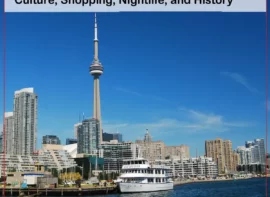Why Visit Ontario?
Ontario is Canada’s most populous province, it has fast-paced urban areas in the South around the Golden Horseshoe, along the 401, and in the Ottawa Valley. These present great architecture, interesting history, great shopping, and a variety of dining experiences. It has amazing natural areas, including the many shores of Lake Huron, the Kawartha, Muskoka, and Rideau cottages areas close to the cities, and then there’s the rugged North, defined as anything north of the French River (with Algonquin Park thrown in).
New for
2024
We have updated our itineraries for the Trans-Canada Highway #17, and added the Southern Route #7, and the Macdonald-Cartier Freeway #401, and we’ve added communities along the St Lawrence between Kingston and Montreal, updated many community pages and their history and their attractions, and added a lot of photos, with thanks to Destination Ontario!




 After crossing from Quebec, the highway winds up the fertile and wide Ottawa Valley until it reaches
After crossing from Quebec, the highway winds up the fertile and wide Ottawa Valley until it reaches  The Trans-Canada Highway continues up the Ottawa River along the original fur-trading route through pretty valley towns like
The Trans-Canada Highway continues up the Ottawa River along the original fur-trading route through pretty valley towns like 




 Contrary to popular belief, Canada’s largest city
Contrary to popular belief, Canada’s largest city  The highway that runs through toronto is the
The highway that runs through toronto is the 






















